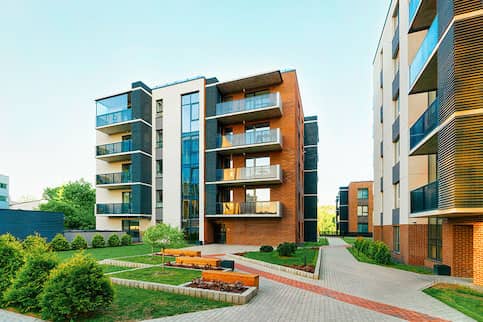How Condo HOA Governs Shared Spaces and Improves Neighborhood Harmony
The governance of common spaces within a condo association plays an essential role in promoting area cohesion and keeping property worths. Via the establishment of thorough guidelines, the Condominium HOA not just controls the usage of communal features but likewise advertises a culture of respect and liability among locals.
Duty of the HOA
The property owners organization (HOA) serves as the regulating body for condo communities, playing a crucial function in keeping the residential or commercial property and promoting a natural living environment. It is accountable for imposing and passing area rules and policies, which are created to maintain the visual worth and capability of the common space. This governance makes sure that all residents follow a standard set of expectations, promoting a feeling of unity amongst diverse property owners.
Furthermore, the HOA handles the monetary elements of the neighborhood, including budgeting, gathering fees, and preserving typical areas. This monetary oversight is vital in making certain that essential upkeep and renovations are accomplished immediately, improving residential property worths gradually. The HOA likewise serves as a liaison in between citizens and outside entities, such as city government and company, resolving common issues effectively.
Moreover, the HOA often arranges neighborhood events and programs, urging neighborly communications and developing relationships amongst citizens. By assisting in open communication and resolving complaints, the HOA contributes to an unified living atmosphere. Thus, its complex function is essential in making certain the smooth procedure and overall satisfaction within condo communities.
Regulations for Shared Areas
Effective administration in condominium neighborhoods necessitates clear regulations for shared rooms, which are important for keeping order and promoting a feeling of neighborhood amongst locals. These regulations serve as standards that guarantee every person can delight in usual areas, such as swimming pools, yards, and leisure centers, without conflict.

Furthermore, cleanliness and upkeep criteria are vital, often stating that citizens should tidy up after themselves and report any type of damages to the property owners' organization. By plainly connecting these expectations, the HOA can lessen misconceptions and encourage regard among citizens.
Eventually, well-defined guidelines for common areas contribute to the general top quality of life in a condominium area, enabling citizens to exist side-by-side quietly while taking pleasure in the services that boost their living experience. condo hoa.
Value of Community Guidelines

Area standards play a significant duty in fostering a natural and considerate atmosphere within condominium associations. These standards develop clear assumptions for residents, promoting a sense of liability and shared responsibility. By marking appropriate behaviors and practices, community guidelines aid protect against misconceptions and problems amongst residents.
In addition, these guidelines offer as a structure for preserving the aesthetic and useful honesty of common rooms. They guarantee that all locals follow standards concerning residential property upkeep, noise degrees, and use of communal facilities. This harmony not just boosts the visual charm of the area but likewise contributes to overall property worths, profiting all house owners.
Problem Resolution Methods
Browsing problems within a condo organization requires a structured strategy to ensure efficient and reasonable resolution. Effective conflict resolution methods frequently begin with open communication, motivating citizens find more information to voice issues in a considerate manner. Establishing a marked network for grievances, such as a recommendation box or an on the internet discussion forum, can facilitate this procedure.
Arbitration is one more crucial strategy, in which a neutral 3rd event aids disputing residents reach a mutually agreeable option. This technique fosters cooperation and understanding, decreasing hostility - condo hoa. The HOA board must also create clear procedures for attending to problems, making sure all parties are aware of the steps included
Normal problem resolution training for board participants can enhance their capacity to deal with disagreements effectively. Making use of a distinct structure, such as the "Interest-Based Relational Strategy," helps concentrate conversations on passions as opposed to placements, promoting a solutions-oriented attitude.
Advantages of Community Harmony
Promoting neighborhood consistency within a condo organization brings numerous benefits that improve the general living experience for citizens. An unified neighborhood urges partnership and teamwork among next-door neighbors, you can try here leading to a much more gracious ambience. When homeowners feel connected and reputable, they are much more likely to take part in common activities and join decision-making procedures, leading to a more powerful feeling of belonging.
Furthermore, neighborhood harmony substantially minimizes problems and misunderstandings, which learn the facts here now can or else interfere with every day life. A calm setting decreases tension and advertises mental well-being, enabling citizens to enjoy their homes fully. Additionally, harmonious connections commonly convert into boosted residential or commercial property values, as potential purchasers are attracted to communities characterized by stability and teamwork.

Verdict
Through the establishment of clear policies and area guidelines, locals are motivated to keep a responsible and respectful atmosphere. Inevitably, the initiatives of the HOA add to a cohesive neighborhood, promoting both building values and overall resident complete satisfaction.
Additionally, the HOA usually arranges community events and programs, encouraging neighborly interactions and building relationships among citizens. By defining appropriate habits and methods, neighborhood standards assist stop misconceptions and disputes among locals.
Furthermore, neighborhood guidelines help with effective communication amongst homeowners and the Homeowners Organization (HOA) With the facility of clear policies and neighborhood guidelines, locals are encouraged to maintain a liable and respectful environment. Ultimately, the initiatives of the HOA add to a natural neighborhood, promoting both residential or commercial property values and total resident contentment.